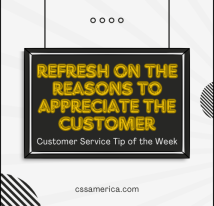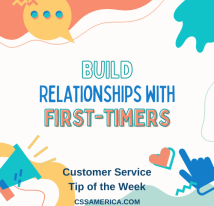
With several clients recently, we’ve led visioning workshops to define the great customer experience as well as their desired culture – so these are topics top-of-mind in many industries. The problem for many staff is that they either already think they deliver a great experience, or different people define the great customer experience differently. So even if there is a vision created, how is that vision clearly articulated to staff?
Occasionally part of the communication plan for a new customer experience vision involves developing a narrative. Consider having a customer experience vision such as “We strive to be the premier grocery store in the community, where the best items and greatest attitudes in our region are seen by the quality of our produce and the smile on our employees’ faces!”
Okay – so the grocery store wants good produce and employees to smile. So what, right?
Let’s now paint the picture with a narrative of the vision that conveys what the customer may experience at checkout (read this as if you’re a customer):
It was the usual superb Grocers Unlimited experience. After hitting just those aisles where I knew they had the product I needed, I went to the register to check out. There was only one person ahead of me, and the cashier welcomed me to her area. She looked as though she had been having a great day, joking with the customer ahead of me about the local sports teams.
When it arrived for my turn to check out, bonus card in hand, the clerk again said hello and asked if she could scan my bonus card. She asked if I’d like her to hold onto my coupons until she was done.
The baggers had been flowing very consistently between the different registers to help. It didn’t seem like any cashier had to do his/her own bagging for an entire set of groceries.
Since I was in a talkative mood, I asked her about the customer service award placards on the wall. “How do you earn an award, a 100% rating,” I asked. “You have a mystery shopper come in who is looking for you to address her appropriately, take care of her needs, and ensure she’s satisfied,” she replied. I asked if she tries to figure out who might be a mystery shopper so that she can earn the award. The cashier said, “No. I try to treat everybody, my customer, my co-worker, my team leader like I would want a family member treated. As long as I keep that attitude, when the mystery shopper comes, I’ll get the reward.”
This short narrative about a two-minute transaction addresses many things – attitude, body language, customer engagement, employee knowledge, teamwork, employees who know their roles, proactivity, and efficient processes.
When you define your customer experience, narrate the story to be clear to others what’s expected.
Signup for FREE Tips! Contact Us More Resources for You Visit Our Home Page























